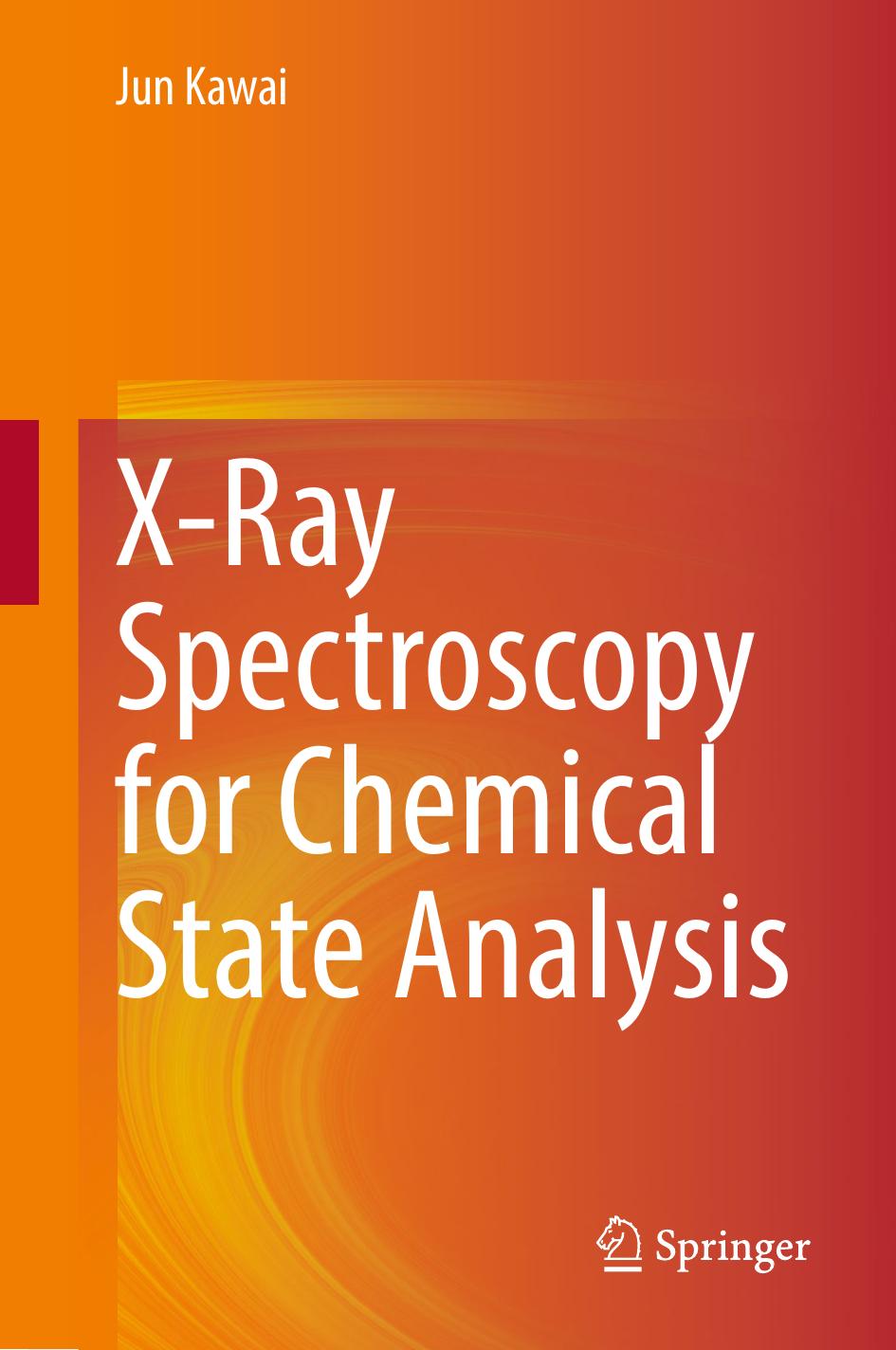X-Ray Spectroscopy for Chemical State Analysis by Jun Kawai

Author:Jun Kawai
Language: eng
Format: epub, pdf
ISBN: 9789811973611
Publisher: Springer Nature Singapore
Fig. 4.12a Amptek Cool-X pyroelectric X-ray generator. 9 V electric battery is inside (taken from Ref. [36] with permission of the Discussion Group of X-Ray Analysis Japan). b Metal can cylinder package TO-8 of the X-ray emitting part (taken from Ref. [37] with permission of Horiba). c The package is connected to 3 V electric battery and the X-ray is emitted as shown by the light of LED of the Geiger counter (taken from Ref. [37] with permission of Horiba)
I was asked by a researcher of Amptek about my Japanese paper [11], reporting the best vacuum pressure of X-ray emission from a pressed NaCl powder. The Amptek researcher had English translation of my Japanese paper, and he asked details about the experiments. And I became to know that paper was something important for Cool-X. The Cool-X is said to be using the molecular sieve inside, and I guess they have improved something about the molecular sieve.
Cool-X uses LiTaO3 (Ta Lαâ=â8.15 keV) and Cu film (Cu Kαâ=â8.04 keV) inside the window. The electron beams to Cu and to Ta emit about the same energy 8 keV characteristic and continuum X-rays. The switching time from cool to heat is controllable, typically 3 min alternative. But the X-rays from Cool-X is always 8 keV peak and Bremsstrahlung X-rays.
Ida joined to my laboratory from Forensic Science Laboratory of Kyoto Police Head Quarter in 2004 as a part-time doctoral student. He used Cool-X for quantitative X-ray fluorescence analysis. Ida showed identifications of paper sheets (Ca, Fe, Ti), cinnabar seal inks (Ca, Cr, Fe, Pb, Hg, Cd, Se), aluminum foils (Fe 0.32%), leather (Cr, Fe, K, Ca), china cups (Ca, Ba, Ti, Fe, Pb), steel (V 0.9%, Cr 4.1%, W 18%), a mix solution of Mn (1 ppm)â+âPb (2 ppm), and paints (Cl, Ti, Zn, Pb) [36]. It was surprising that an unstable and weak X-ray generator such as Cool-X could analyze quantitatively down to the ppm concentration.
One day, a Japanese agent of Amptek asked me to lend the Cool-X to the relativistic professor, who commented me that the charged-up NiF2 X-ray emission breaked the energy conservation. The Japanese agent said that the relativistic professor broke the beryllium window in his experiment, and he needed it urgently for some demonstration experiments. I said no, because the Cool-X had lifetime of a few months, and if it was used by a careless person, the lifetime tended to be extremely shorter. It was important to Idaâs doctoral degree, because Ida wanted earlier doctoral defence than usual in order to return to the Police.
Naranjo et al. [38] observed nuclear fusion, Dâ+âD â 3Heâ+ân, using a pyroelectric crystal LiTaO3 in 2005. The deuterated target was ErD2, which was probably similar to LaNi5 hydrogen storage alloy. The deuterium pressure of the vacuum chamber was 0.7 Pa, where the pyroelectric high voltage made D+ and its acceleration. Geuther et al. [39] also published nuclear reaction due to a pyroelectric crystal, which verified the report of Naranjo et al. [38]. The Peisachâs suggestion
Download
X-Ray Spectroscopy for Chemical State Analysis by Jun Kawai.pdf
This site does not store any files on its server. We only index and link to content provided by other sites. Please contact the content providers to delete copyright contents if any and email us, we'll remove relevant links or contents immediately.
| Automotive | Engineering |
| Transportation |
Machine Learning at Scale with H2O by Gregory Keys | David Whiting(3968)
Never by Ken Follett(3703)
Urban Outlaw by Magnus Walker(3305)
OPNsense Beginner to Professional by Julio Cesar Bueno de Camargo(3227)
Sapiens and Homo Deus by Yuval Noah Harari(2943)
Will by Will Smith(2735)
A Short History of Nearly Everything by Bryson Bill(2578)
Hooked: A Dark, Contemporary Romance (Never After Series) by Emily McIntire(2463)
Rationality by Steven Pinker(2228)
Borders by unknow(2143)
Holy Bible (NIV) by Zondervan(2055)
The Becoming by Nora Roberts(2031)
The One Percenter Encyclopedia by Bill Hayes(1754)
Freedom by Sonny Barger(1742)
HBR's 10 Must Reads 2022 by Harvard Business Review(1738)
A Short History of War by Jeremy Black(1725)
Five Ways to Fall by K.A. Tucker(1665)
Girls Auto Clinic Glove Box Guide by Patrice Banks(1654)
Go Tell the Bees That I Am Gone by Diana Gabaldon(1645)
